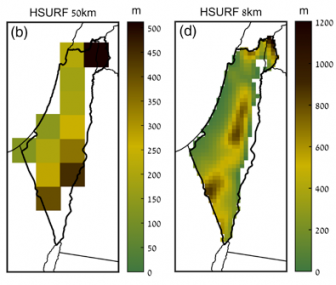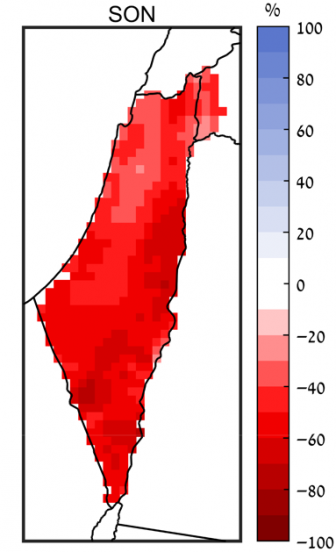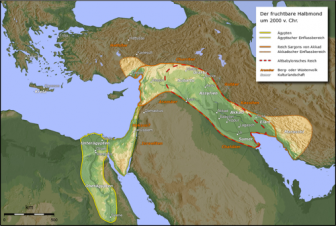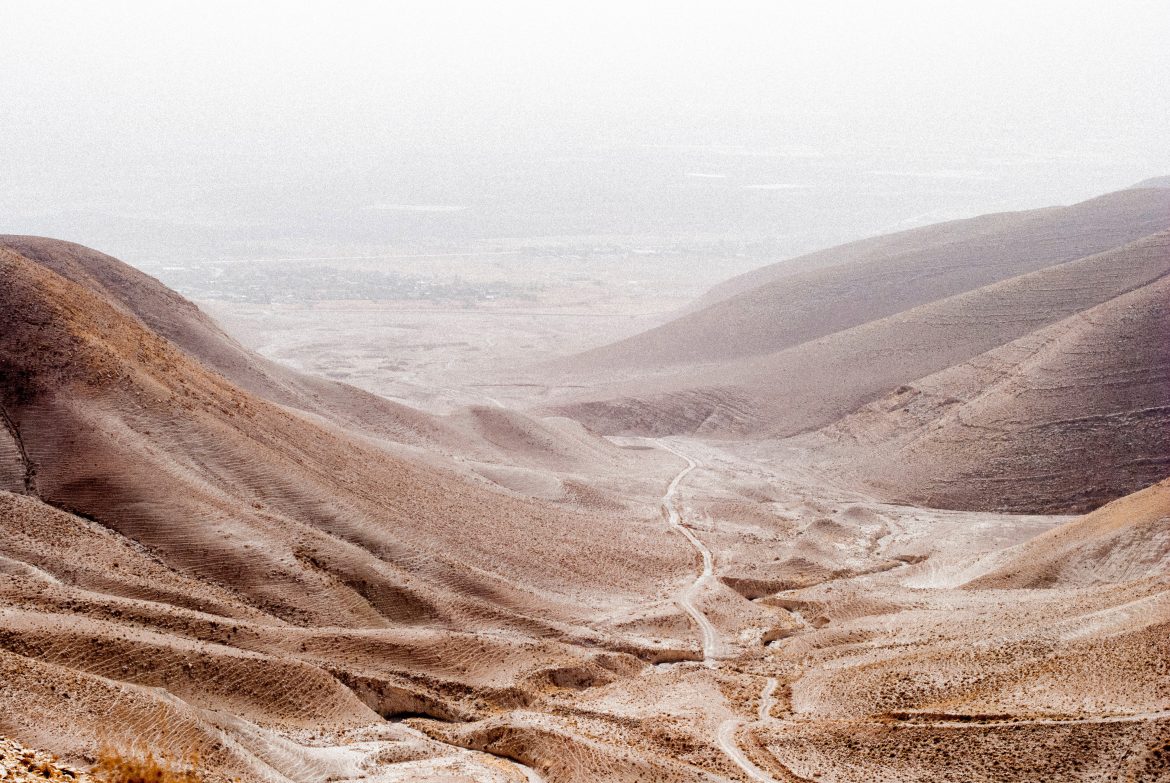“Everybody talks about the weather, but nobody does anything about it.” ~ attr. to Mark Twain
“R. Chanina b. Dosa exclaimed: Master of the Universe, the whole world is in distress…whereupon rain fell.” ~ Talmud, b.Taanit 24b
We are in the third week of 5780, the week of Sukkot, when we pray for the water cycle and the fertility of the land. Our Sukkot prayers are focused right at the level where weather, the day-to-day changes everyone likes to talk about, turns into climate, the thing we need to do something about. In ancient Israel it was a time of great joy, but also great danger – if the rain didn’t start to fall when it was needed, the whole society could quickly face famine.
Paradoxically, what our ancestors loved most about the land of Canaan was how vulnerable it was to drought and famine. As it says in the Torah, “The place where you are going is not like the land of Egypt, where you sowed your seed and you gave drink with your foot (by pumping water), like a garden of greens… She is a land of mountains and valleys, by the rain of the heavens she drinks water… Always the eyes of YHVH your God are upon her, from the beginning of the year until the end of the year” (Deut. 11:10-12). What it means to say that “God’s eyes are upon the land” is that every day God would judge whether the people merited the rain needed for agriculture and for life.
What this amounts to in quasi-scientific terms is that the feedback loop between human actions and climate was extremely swift. In fact, that is literally true of the holy land, which is more vulnerable to extremes in the face of climate change than most places on Earth besides the polar regions.
The idea that human actions can affect climate is not new to readers, but this idea was treated strictly as primitive superstition by scientists and most other rational people until the past 50 years. In fact, the Reform siddur still leaves out the second paragraph of the Sh’ma, which is all about the connection between human action and climate: “Watch yourselves lest you turn your hearts toward gods of otherness… and God stops up heavens and the land will not give her produce.” (Deut. 11:16-17)
In Israel, awareness of this vulnerablity has grown over the past several decades. According to the Israel National Report on climate change, produced by Ben Gurion University and submitted to the UN in 2000, “In the Mediterranean basin, a northward shift of 300 to 500 km and an upward shift of 300 to 600 m are projected with 1.5 degrees Centigrade of warming.” But a picture of what will happen specifically to Israel and Palestine, rather than to the Mediterranean basin in general, has only emerged in the past two years.
Unlike any other country in the world, Israel has more zones of rainfall and kinds of ecosystems, along with fauna from three continents, overlapping in a place slightly smaller in area than New Jersey. Though at about 320 km from north to south Israel is 1/3 longer, any change that covers more than 300 km would change the entire country. And the distance from Beersheva in the Negev to Lebanon border is much less: 215 km. If the information in the National Report were true, and everything to shifted northward 300 km the Negev would take over the entire country of Israel.
Subsequent National Reports continued to cite this factoid about ecosystems shifting northward 300 km. I’ve been trumpeting this scary picture for many years in advance of Rosh Hashanah, when we pray for life. And I’ve wondered, why weren’t people screaming to high heaven that we needed to save the holy land from ecological ruin? But the paper cited by the 2000 National Report was published in 1993. Surely today, more than 25 years later, there were more specific predictions, not just for the Mediterranean, but specifically for Israel?
I started researching the current state of our knowledge since just before Rosh Hashanah this year, when I wrote about the confluence of the global climate strike and the Israeli elections. It turns out that the very latest data tell us something different – in some ways less terrifying, in some ways even more scary.
Astonishingly, a much more detailed study of the impact of climate change on Israel was published only one year ago, in the International Journal of Climatology. Its authors included three researchers associated with Tel Aviv University, Pinhas Alpert, Hadas Saaroni, and Assaf Hochman, as well as two Italian scholars.[1] This was the first study to look at the region with a resolution that yielded projections of what would happen differentially in each part of Israel.
To give you an idea of what that means, the resolution of many earlier studies was 50 km, which means that all of Israel was reduced to just 12 squares on a grid – you could think of this as a picture made out of just 12 pixels. The new study used a resolution of 8 km—which only recently became possible—and composed a picture of Israel made of almost 500 such squares. (See figure 1.)

Figure 1. Modeling Israel using 50 km resolution vs. 8 km resolution. Lower resolution also limits the degree to which elevation—an essential factor—can be modeled, to a maximum of 500 m, while with the higher resolution, the full range of elevation, up to
1200 m, can be included. Used with permission of RMETS and authors.
I spoke with Dr. Alpert over the phone to learn more. Here’s what I found out.
Even though the Negev will expand northwards somewhat, the COSMO study found that that will not be the major concern that people thought it would be. What is most dangerous is that overall vulnerability of the climate of Israel and Palestine to change is much higher than originally estimated. This is not based on models but on actual changes being observed. Average temperature is now increasing by more than half a degree per decade. That’s five times the global average of about 1 degree per century. That’s not a factoid, or a modeling forecast. It’s a measurement based on data from 1960-2017, published only last May.[2] That’s more than twice the already accelerated rate of change reported in June in Haaretz.
That is essentially the scientific version of what the Torah has already taught us: the eyes of God are always on the land of Israel, from the beginning of the year until the end of the year; whatever ecological consequence the region suffers, the land of Israel will suffer much worse. The difference between the science and the mythos is equally important: the land of Israel will suffer those consequences because of the sins of the U.S. and China, much more than it will suffer because of any damage Israel can do, given how small Israel’s (and even more so the Palestinian Territories’) contribution to climate change is in comparison with the global output of CO2 and GHG (greenhouse gases).
What the modeling from last year’s paper does predict is no better, though: more consecutive dry days, fewer consecutive wet days, a decrease of 100mm in precipitation in most places, with reductions of ~40% in north and central Israel in the autumn and increases of about the same amount in the most southern arid parts in the spring. Heat waves will become a big problem, with temperatures remaining much higher than normal for 3-5 days, and even as long as ten days. Here’s a sample of the data, showing the percentage decrease in rainfall for September, October and November, which includes Sukkot and the beginning of Israel’s rainy season:

Figure 2. Changes in precipitation during the months of September, October and November in the years 2041-2070, under RCP4.5. See below for explanation of RCP4.5. Used with permission of RMETS and authors.
Other studies anticipate increase in evaporation, in flooding, and in extreme weather, all of which will push aquifers well below so-called “red lines,” and anticipate a sea-level rise of about ½ a meter by 2100. On the broadest scale, a different study [3] co-authored by Dr. Alpert found that the Fertile Crescent, the arc that goes from Israel through Turkey to Iraq/Mesopotamia, where agriculture began, will disappear. The impact of these changes is not just in the distant future. Climate change, and its specific impact on the Fertile Crescent, is implicated in the historic drought that preceded and sparked Syria’s civil war.[4]
Of course, as long as there’s enough water for irrigation, whether it comes from desalination or aquifers, it may be possible for Israel’s agricultural lowlands to remain productive. A study that predicts the consequences for Israel’s aquifers is only now being finalized, so the data is not yet available, but some aquifers will be hard hit, while other very ancient aquifers of extraordinary depth will hold out indefinitely, though declines in level will require more and more energy to get at the water. Fossil fuels are also what give Israel the power for desalination and for pumping water from greater and greater depths – this is just one more vicious circle embedded in so many vicious circles that threaten global climate stability.
What happens to the rest of an ecosystem when every place is impacted by drought, and only the areas where agricultural crops are grown get sufficient water? All the irrigation one can do won’t sustain the greenway that birds migrating between Europe and Africa depend on. It won’t sustain millenia- or millions-of-years-old ecosystems that exist only in Israel, which will become extinct. What happens to pollination if the ecosystems and insect populations surrounding agricultural areas collapse? More than this: how will we live in a world, spiritually or physically, where only what we choose survives, where the diversity of life is destroyed by human ignorance and avarice and complacency?
No amount of technology will change the fact that the land that so many Jews believe God entrusted to us will be ecologically upended. Nor will it change the fact that the decreasing number of Palestinians who know how to sustainably eke existence from the hilly semi-arid land Jews like to call Judea will have their way of life wiped out and their practical knowledge made useless.
Those are the “trees” of the forest, but the forest still looks the same: climate change, which should be called global climate disruption, is an utter disaster for Israel and Palestine. (I say Israel and Palestine because it doesn’t matter where borders are drawn or even if they are drawn. Climate change doesn’t stop for any border.) We are not just playing with fire. We are riding a wooden hobby horse into a conflagration.
Our tradition teaches that God doesn’t like it when people ruin the land – which should be obvious in any case. That’s the message of the Noah story, and the Abrahamic covenant, and the Torah laws about Sabbath and Sabbatical year and Jubilee. It’s surely the right message for a Creator who looks at the world and calls it “very good.”
The Torah also teaches that God doesn’t like it when people act like they can control the land and water, ignoring the favor of heaven and rain to instead water everything by irrigation, like the Egyptians. That’s the reverse of how the Torah praises the land of Canaan, as we read above: “The place where you are going is not like the land of Egypt, where you sowed your seed and you gave drink with your foot (by pumping water)… She is a land of mountains and valleys, by the rain of the heavens she drinks water…” (Deut. 11:10-12)
As we learned above, the thing that made the hilly lands called Canaan or Judea+Samaria or Palestine so beloved in the eyes of our ancestors and the eyes of God, according to scripture, is exactly that when you’re farming on terraced hills, you cannot control rainfall, nor can you do pump irrigation. As I wrote in 2015 (in my book Kabbalah and Ecology), “the Torah teaches that it is a privilege to live in the ‘holy land’, not a right – a privilege that can be revoked when people abuse either the land or other human beings. It is that very fact – that everyone’s tenure is tenuous – that makes Canaan/Israel a holy land.”[5]
The Torah is telling us something counter-intuitive: that it is unsustainable to depend entirely on irrigation, which is what Israel is coming closer and closer to doing as climate disruption deepens. There’s scientific validity to this idea as well: land watered solely through irrigation can become impregnated over centuries with salts that eventually make it infertile. Precipitation—water that moves through the land and carries those salts back to the sea—is essential to the vitality of the land. Our ancestors knew something about this from history: the greatest civilization known to humanity in that part of the world, Mesopotamia, was destroyed by irrigation, which made the lands the Mespotamian empire was founded upon infertile.[6]

A map of the Fertile Crescent, c. 2000 BCE, Wikimedia commons. Note that the part of the Fertile Crescent nurtured by rainfall does not include Egypt and parts of the central Mesopotamian valley, which can be irrigated by rivers.
When I first read the 2000 Israel National Report about ecosystems shifting 300 km northward ten years ago, I didn’t pay attention to the detail that followed: “The time horizon for this change…ranges between 2075 and 2107.” This was not just a prediction for a few generations hence. It described the world as it could be in the lifetime of my son. The 2018 COSMO study has an even shorter timeframe of 2070.
The National Report also assumed an average global temperature increase of 1.5 degrees, but the more likely case scenario now seems to be 2 degrees. But temperature increase is not how climate scientists actually talk about their models, I discovered. Instead, they look at how the wattage of energy falling on a square meter will increase over time. The scenario used in the 2018 study is based on an increase by 2100 of the amount of heat detained by our atmosphere by 4.5 watts per meter, which is called RCP4.5. That scenario is what will likely transpire if we significantly decrease the carbon we are putting into the atmosphere starting in 2040, which in the Hebrew calendar is 5800. But that scenario only gives us about a 50% chance of keeping the Earth from warming less than two degrees over this century, which in the Jewish calendar ends in 5860. That means if we want better than even odds, we have to start getting this right long before we reach the New Year of 5800.
So here we are at the start of the year 5780. The mainstream Jewish community continues obliviously, believing that the greatest threat to Israel is Iran. For Jewish liberals, the greatest issues are issues of human rights. The Jewish enviro movement in North America is mostly focused on local farming or getting in touch with wilderness. The environmental movements in the U.S. and in Israel, like many others around the globe, are fighting a rearguard action just to get basic environmental laws in place and enforced. And the right-wing of the Jewish world cares much more about controlling and settling more and more of that land that could become uninhabitable, paying little attention to climate change, which is in fact Israel’s greatest existential threat.
In actuality, only the right is doing something that will help Jewish people in Israel survive the climate cataclysm—commandeering resources—but they are doing it at the expense of the Palestinian people. That may be a way for some Jews to survive, but it’s the quickest way to make sure Judaism as a moral value system becomes extinct.
Every year, on the shabbat before Rosh Hashanah, the Torah exhorts us: “I have made the heavens and the earth witnesses against you: life and death I set before you… you must choose life, so that you will live” (Deut. 30:19). This week we dwell in our sukkot, our temporary shelters with roofs of greenery, exposing ourselves to weather and climate, accepting our vulnerability to the cycles of the Earth and her seasons. The vulnerability we experience is more real than the manufactured reality people create that lets them shut themselves off from the elements. But now we are living in a unique time, when we know exactly how great that vulnerability is.
What can the Jewish people do in the face of all these challenges? Few of the things we can do as individuals will make the crucial difference, even though actions like composting can radically effect how we experience the world and our relationship to it. How we act on the national level will matter most. Israel can become a moral and technological leader in making the changes we need. American Jews who care about Israel and the Earth can play a crucial role in getting the U.S. to reform its economy, so that Israel and the rest of the world can survive. All of us who care about tikkun olam, repairing and healing the world, from whatever tradition or heritage, need to stay focused on healing the living world that sustains us.
In 2019, we have a clearer picture of what it means to choose life, and we also know that the time we have to choose it is running out. As we pray for rain and for the health of crops, as we pray for this world “suspended upon nothingness,” let us remember that the rituals of this holiday are not just fun. Our rituals must lead us to deepen our lives into action. Like R. Chanina, it’s time for us to do something about the weather.
If we make radical changes in the next ten years, so that our carbon output starts descreasing by 5790 or 2030, it’s still a scary picture, but our chances are better than 50%. “Better late than never” may work for some things. But for the planet, and for the holy land – much later equals never.
This article is a much-expanded version of an article Rabbi Seidenberg published for Rosh Hashanah, “It’s now or never: We need to choose life by Rosh Hashanah 5790” [https://blogs.timesofisrael.com/its-now-or-never-we-need-to-choose-life-by-rosh-hashanah-5790/]
NOTES
[1] Hochman et al., “High-resolution projection of climate change and extremity over Israel using COSMO-CLM” in International Journal of Climatology, 14 August, 2018. This paper, along with others co-authored by Dr. Alpert and cited below, is downloadable from Dr. Alpert’s Tel Aviv University publications page at https://www.tau.ac.il/~pinhas/publications.htm.
[2] “Changes in extreme temperature and precipitation indices: Using an innovative daily homogenized database in Israel” in International Journal of Climatology, 01 May, 2019.
[3] Kitoh et al., “First super-high-resolution model projection that the ancient Fertile Crescent will disappear in this century” in Hydrological Research Letters 2:1 (2008)
[4] Kelley et al., “Climate change in the Fertile Crescent and implications of the recent Syrian drought” in Proceedings of the Natinoal Academy of Sciences, March 17, 2015 112 (11) 3241-3246.
[5] David Mevorach Seidenberg, Kabbalah and Ecology: God’s Image in the More-Than-Human World (Cambridge, 2015), p.15.
[6] Even Eisenberg brilliantly analyzes this dynamic and its potential impact on the historical memory of our ancestors. See The Ecology of Eden (1998), or “The Mountain and the Tower: Wilderness and City in the Symbols of Babylon and Israel”, in Waskow, Torah of the Earth (2000), vol.1, 18–54. The shift to complete reliance on irrigation also corresponded to climate change in that region that significantly lessened the amount of rainfall.
